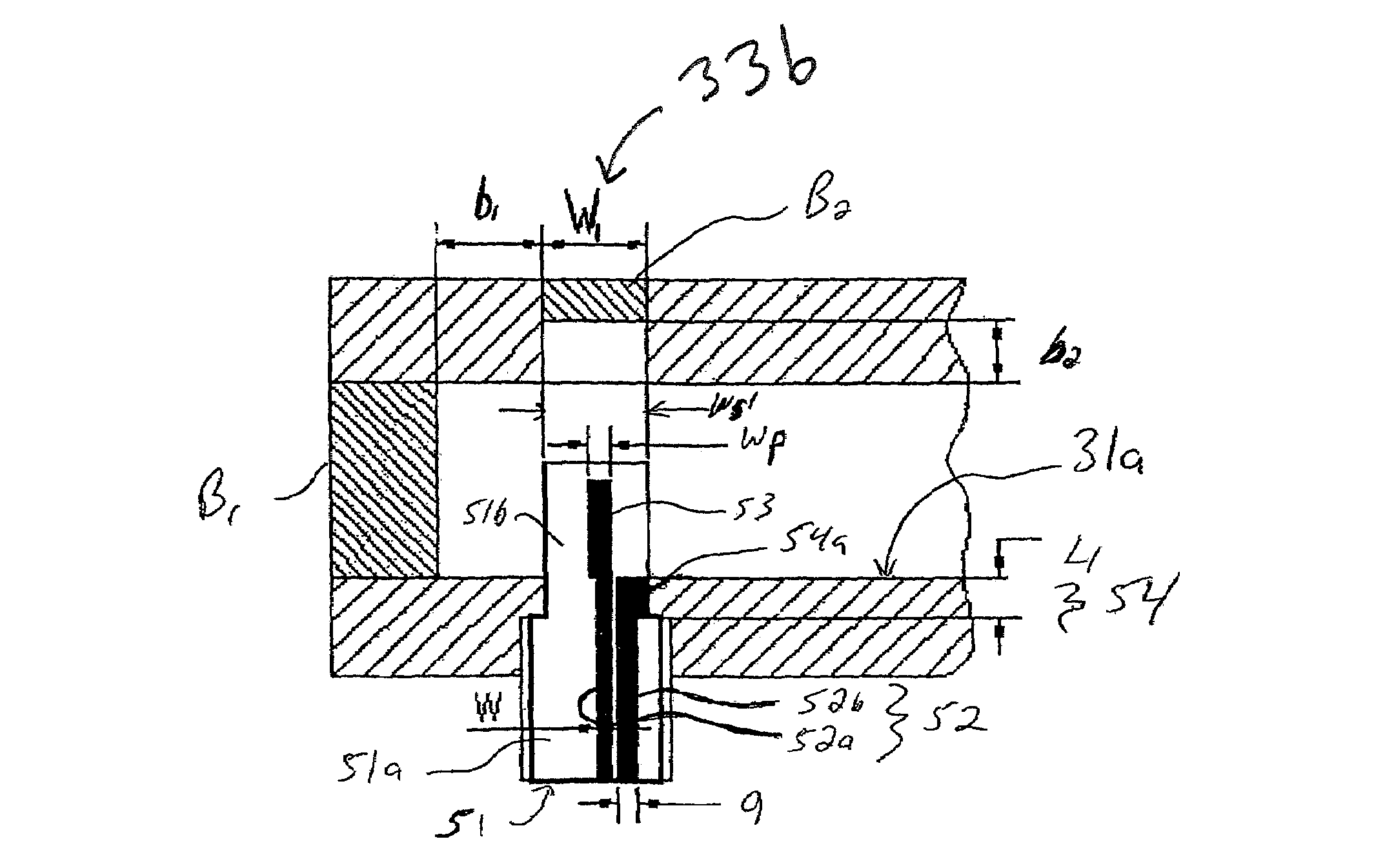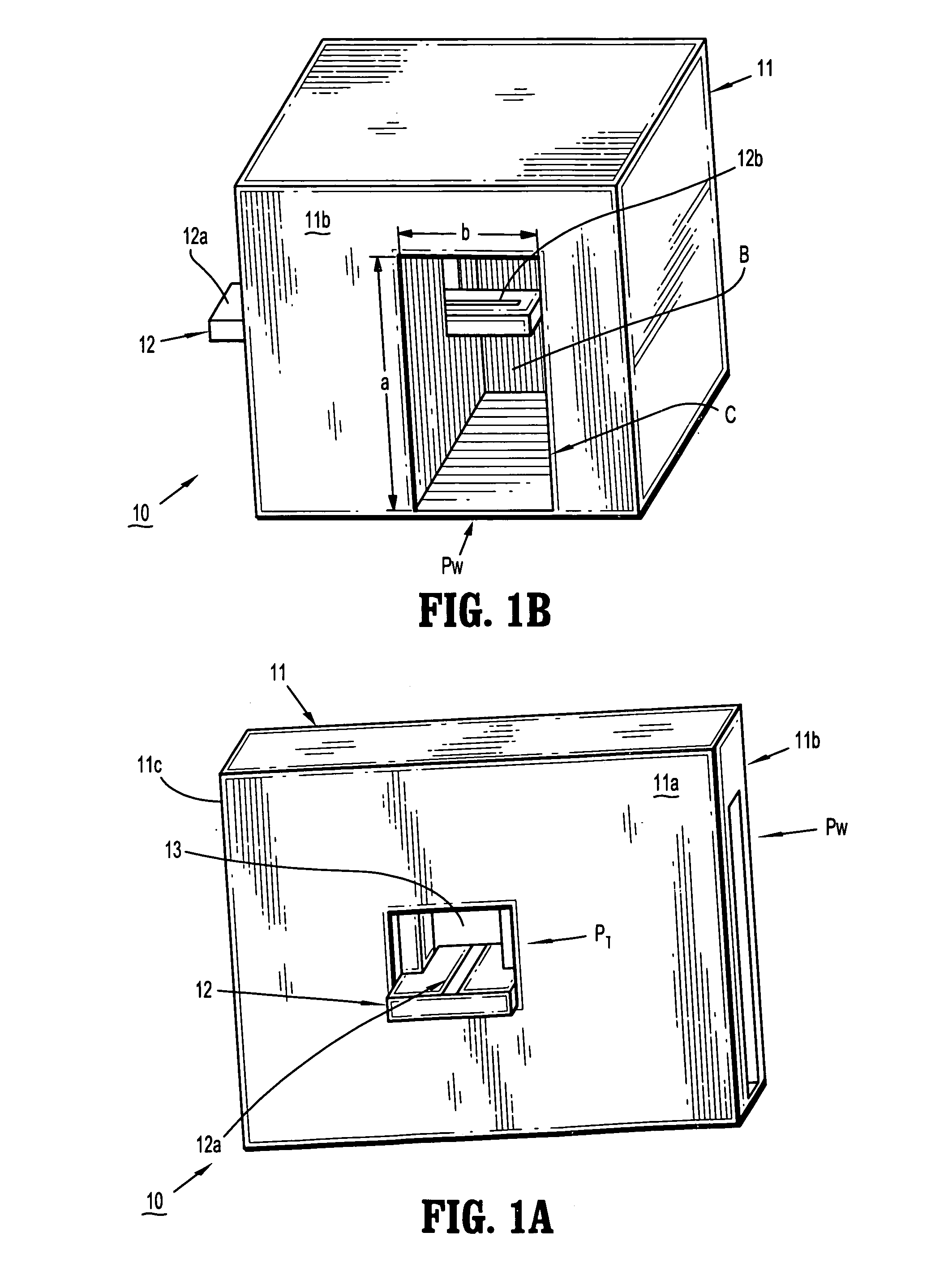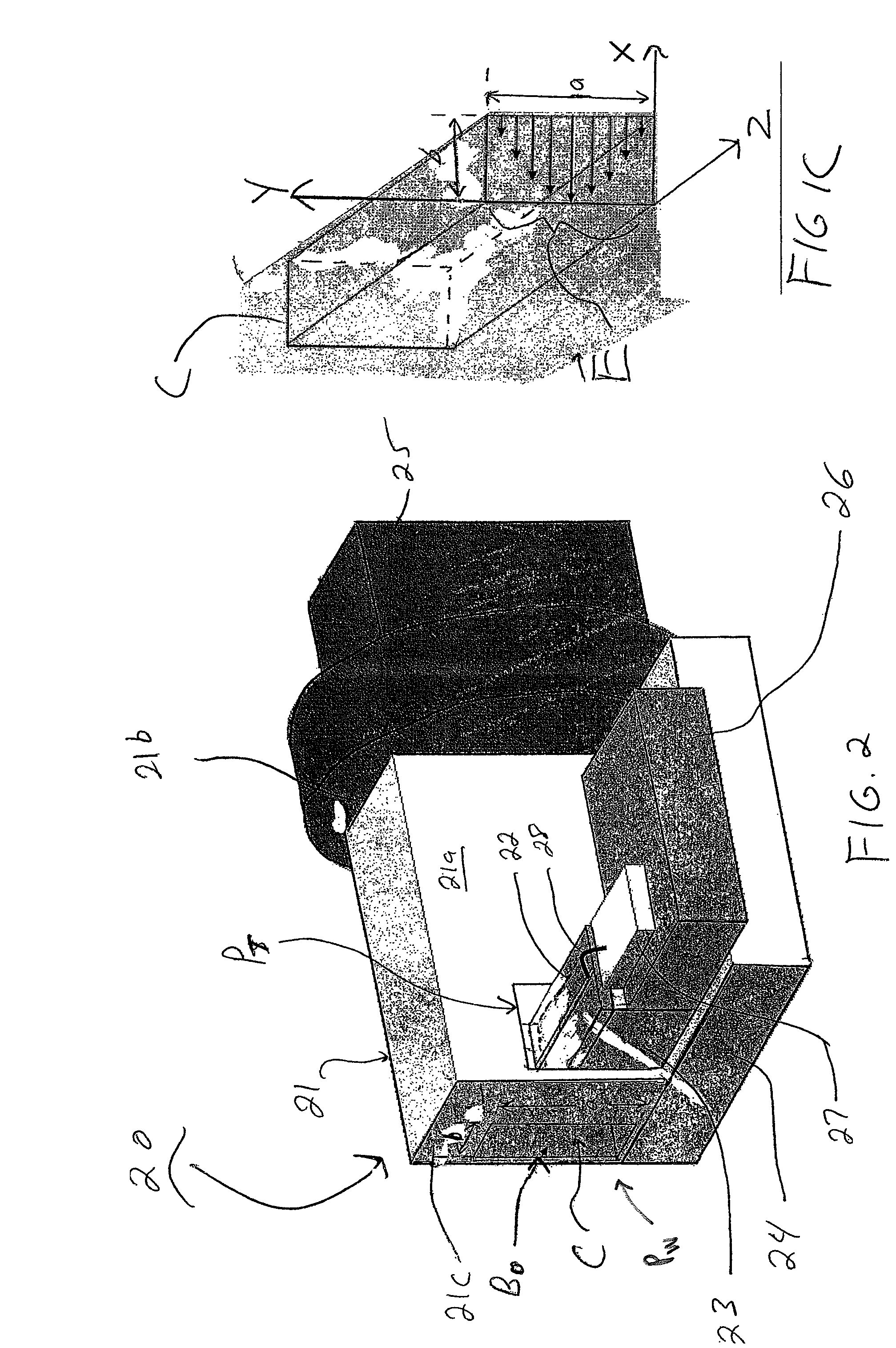Apparatus and methods for constructing and packaging waveguide to planar transmission line transitions for millimeter wave applications
a technology of waveguides and transitions, applied in electrical apparatus, waveguides, coupling devices, etc., can solve the problems of increased losses at high frequencies, printed transmission lines may be subject to parasitic modes, etc., and achieve high-performance coupling power
- Summary
- Abstract
- Description
- Claims
- Application Information
AI Technical Summary
Benefits of technology
Problems solved by technology
Method used
Image
Examples
Embodiment Construction
[0023]FIGS. 1A and 1B are schematic perspective views of a transmission line to waveguide transition apparatus (10) according to an exemplary embodiment of the invention. More specifically, FIGS. 1A and 1B schematically depict a transition apparatus (10) for coupling electromagnetic signals between a rectangular waveguide (e.g., WR15) and a printed transmission line using an E-plane probe-type transition, according to an exemplary embodiment of the invention. The transition apparatus (10) comprises a metallic transition housing (11) (or waveguide block) which has an inner rectangular waveguide cavity C (or rectangular waveguide channel) of width a (broad wall) and height b (short wall). An aperture (13) is formed in a front wall (11a) of the waveguide block (11) through a broad wall of the rectangular waveguide cavity C to provide a transition port PT for insertion and support of a planar transition substrate (12) having a printed transmission line (12a) and printed E-plane probe (1...
PUM
 Login to View More
Login to View More Abstract
Description
Claims
Application Information
 Login to View More
Login to View More - R&D
- Intellectual Property
- Life Sciences
- Materials
- Tech Scout
- Unparalleled Data Quality
- Higher Quality Content
- 60% Fewer Hallucinations
Browse by: Latest US Patents, China's latest patents, Technical Efficacy Thesaurus, Application Domain, Technology Topic, Popular Technical Reports.
© 2025 PatSnap. All rights reserved.Legal|Privacy policy|Modern Slavery Act Transparency Statement|Sitemap|About US| Contact US: help@patsnap.com



